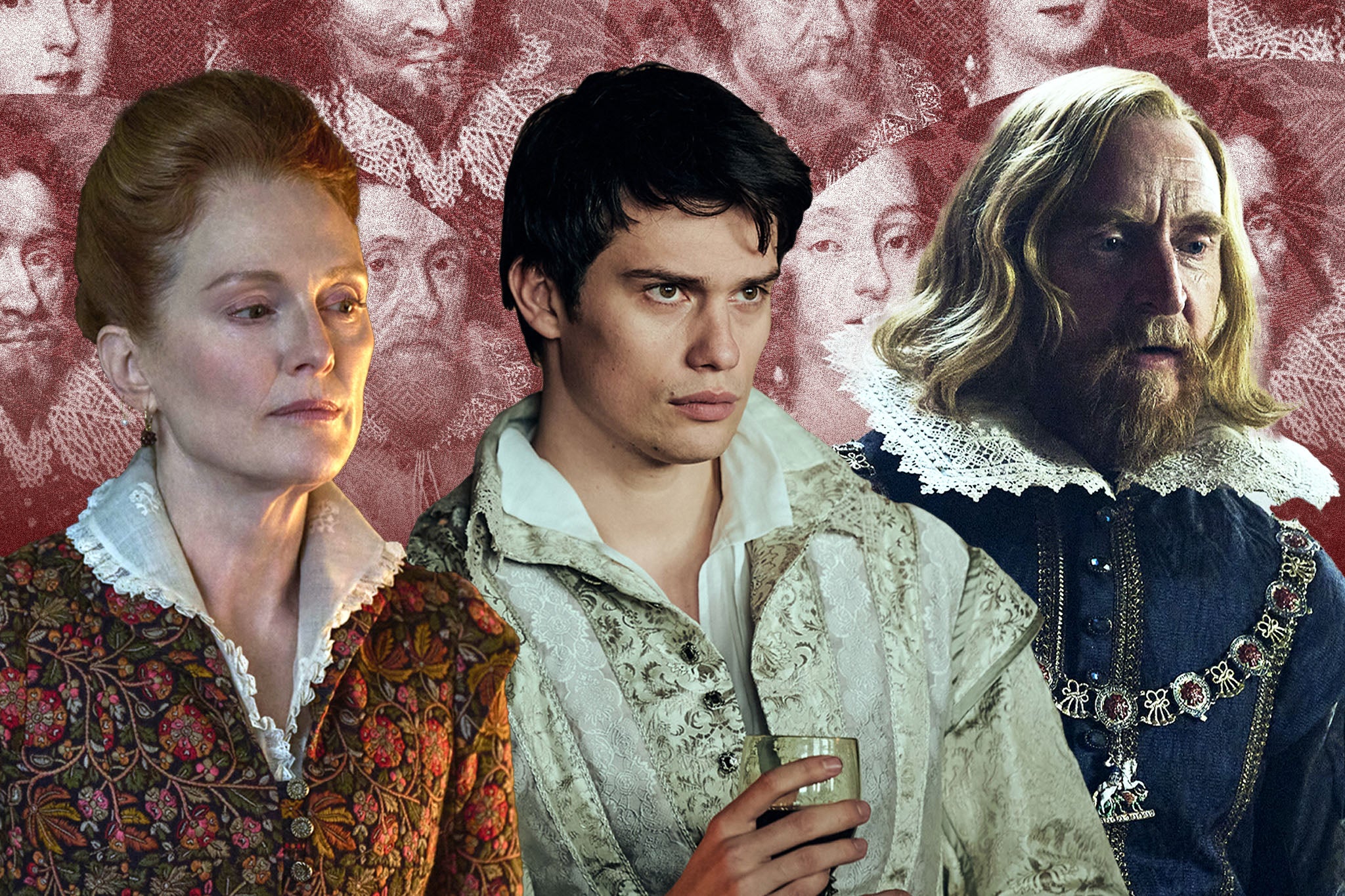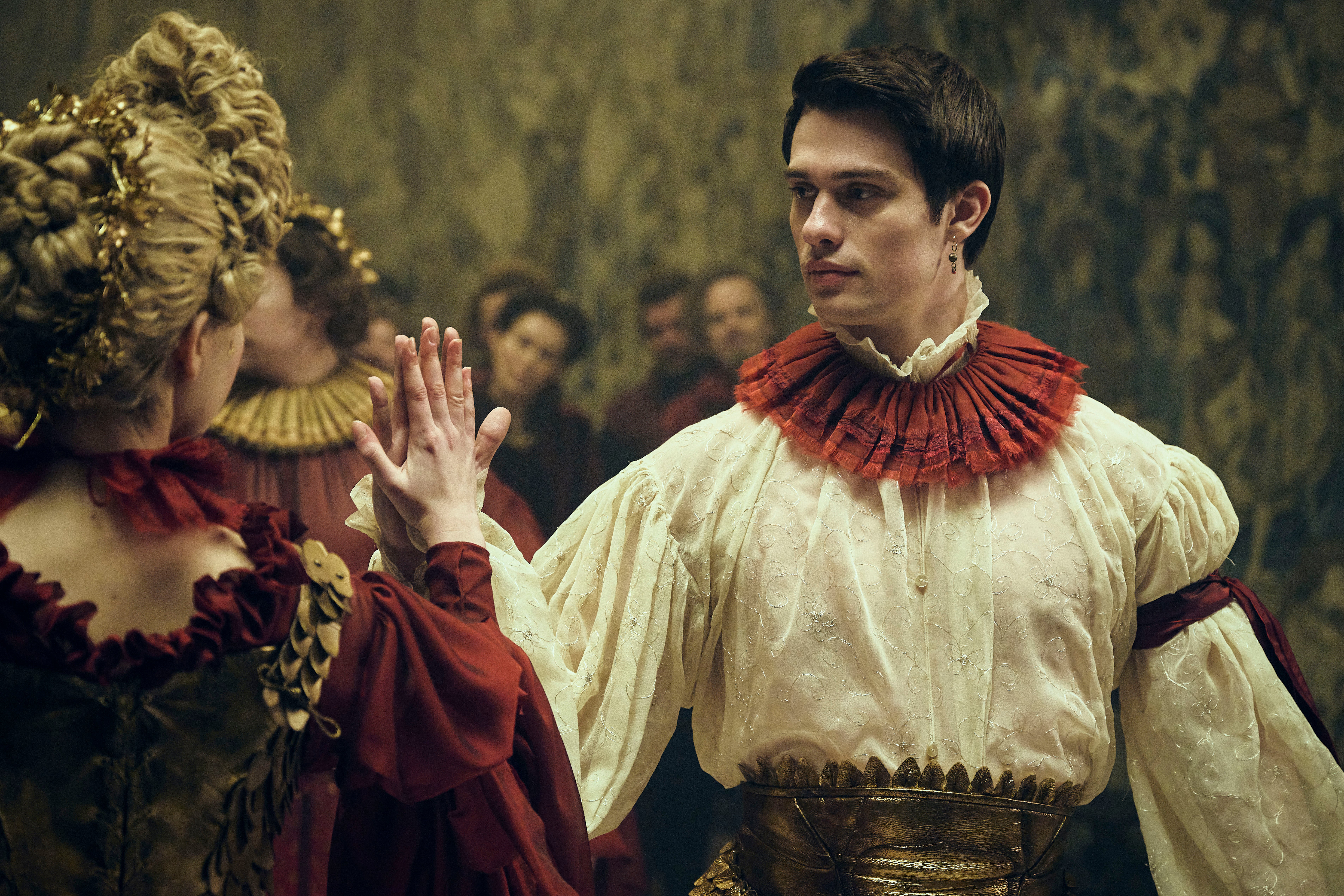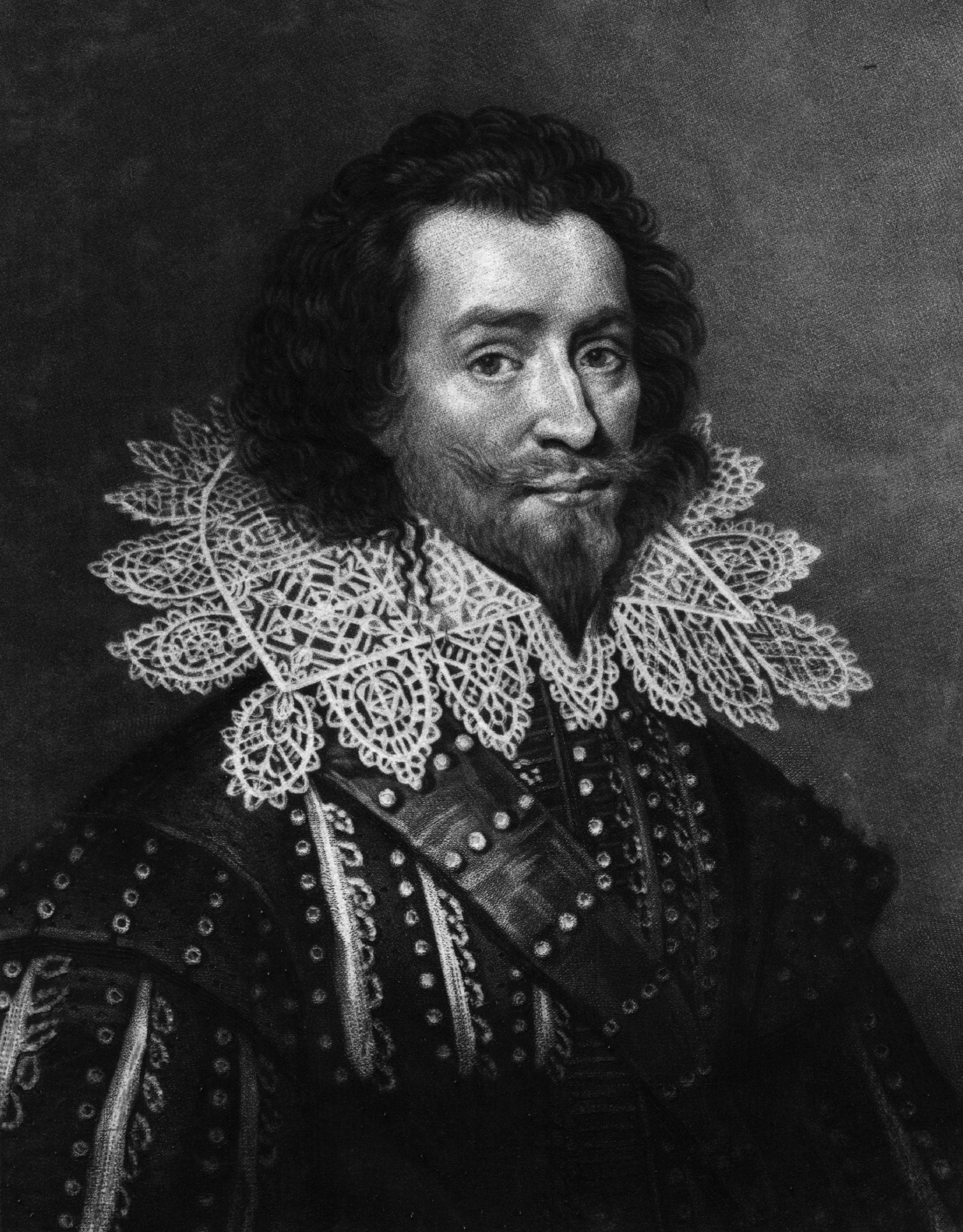The scandalous true story of Sky’s ‘Mary and George’: Orgies, murder and a king’s secret ‘husband’
The shocking scheming of Mary Villiers – who encouraged her beautiful son George to seduce King James I – is the subject of a new breeches-ripping TV drama. But how much of it is true? Author of ‘The Favourite’, Ophelia Field, takes a closer look at the sex and power plays of a time that makes ‘The Crown’ look pale by comparison...

Endless candlelit orgies will be most viewers’ takeaway impression of King James I’s court when they start watching the racy new Sky Atlantic costume drama, Mary & George.
Starring Nicholas Galitzine as the king’s adored secret lover, George Villiers (the 1st Duke of Buckingham), and Julianne Moore as his social-climbing mother, Mary, the series was “inspired by” Benjamin Woolley’s 2017 non-fiction book, The King’s Assassin, and maybe also by Yorgos Lanthimos’ Oscar-winner film, The Favourite. This means that facts aren’t allowed to get in the way of a good story.
Which is fine. As the author of The Favourite, the non-fiction story of Sarah Churchill’s relationship with Queen Anne, I know that real life doesn’t always give you the pace and compact drama that successful fiction needs.
And no one can incontrovertibly prove or disprove how much transgressive royal sex was had in the shadows of such distant history.
But having researched the relationship between the real George Villiers and King James over the past five years, what I find striking is how the superstar casting of Moore hits upon a larger truth: namely, that the women surrounding that famous same-sex relationship were by far its most interesting characters.
I came across this story after looking into the house where George and James were first introduced: Apethorpe, near Peterborough.
George’s late father, a minor landowner, had been an old hunting companion of Apethorpe’s owner, so Mary used this connection to mastermind her prettiest son’s presentation to the king there in 1614.
She knew that if her son became an intimate of the king, it would allow her, as family matriarch, to engineer the collecting of profitable positions and marriages for the extended Villiers family.
After George’s success at Apethorpe, the young man was pushed forward to permanently replace the king’s previous favourite, Lord Somerset, who was supporting certain powerful Catholic families over their more Protestant ones. Anne of Denmark, James’s queen, though discreetly Catholic herself, considered Somerset insolent, and conspired with courtiers to help George steal her husband’s affections.

Anne is therefore another fascinating female figure in this story, and the drama doesn’t give quite enough credit to her influence on Villiers’ meteoric rise. Without Anne’s explicit approval, the king wouldn’t have taken Villiers into his bedchamber, with all that implied. The addition of sex between the rivals, Somerset and Villiers, as depicted by this breeches-ripper of a series, however, is fiction without foundation, even among contemporary slanders.
We see George’s mother orchestrating a scandalous prosecution of a murder charge to finally get Somerset out of the picture, but in truth, it was probably King James himself who used the convenient murder allegation as a way to see off his former lover. Although the series gives Mary credit for this and several other machiavellian betrayals, this is certainly overstating the hand she had in Jacobean high politics.
She was right, however, in assuming that the king’s love for George would open doors for her and the wider family. Mary became the Countess of Buckingham and George was publicly matched to another extraordinary woman, Katherine Manners, the richest heiress in England after her two half-brothers both died, thanks to what the law courts ruled had been a witch’s curse.
Kate, as she was known, was closer to our stereotype of a submissive 17th-century woman but was strong-willed in her own way: when told to renounce her Catholic beliefs to marry George she resisted bravely, even when the king sent a team of his best Protestant theologians to lecture her.
Compared to all these strong women who pursued their own convictions so determinedly and independently, Villiers himself does seem to have been thin ale
Once married, however, Katherine apparently never expressed the slightest concern about sharing her husband with King James, who wrote about looking forward to renewing the vows of his and George’s “marriage” and whom George once addressed in a private letter as “husband”.
Meanwhile, Katherine’s sister-in-law, Frances Villiers, was another remarkable woman who, in the Sky series, gets only minimal screen time. Frances was forcibly married at 15 to George’s probably bipolar elder brother John (contemporary gossip said she had to be tied to her bedposts and whipped by her father before submitting to it), and she was the one woman who stood up to George at the height of his power.
Having banked her dowry, the Villiers clan had George’s brother locked away with a country doctor, kept her under surveillance, and refused to give her sufficient money to keep herself. But Frances wrote to George demanding he “take some course to give me satisfaction, to tye my tongue from crying to God, and the world for vengeance for the unworthy dealing I have received”. When George continued to ignore her, she appealed directly to the king, who commanded his lover to treat her more honourably.

At the start of his English reign, James had been surrounded by a circle of Scots gentlemen of the bedchamber, envied and resented by the English in equal measure.
By December 1621, the widowed king’s day-to-day main companions and keepers were George’s female “folks”: Mary, Kate and Frances. Despite their usefulness to George whenever he had to leave the king’s side, he and James referred to them collectively in their correspondence as “the c**ts” and “b******s”, and talked about them as breeding stock exactly as they talked about the king’s staghounds.
However, their help allowed George to hold on to power in the court until James’s death in 1625, which in turn meant he was in place to become the favourite of James’s son, Charles I.
The thesis of the series, and in Woolley’s book, is that Mary and George murdered the king because he wouldn’t be manipulated by them any further. But James was never simply George and Mary’s puppet, nor, after the early Apethorpe days, was George just his mother’s puppet.

But compared to all these strong women who pursued their own convictions so determinedly and independently and, in some cases, by making pragmatic peace with their husbands’ same-sex dalliances, George Villiers himself does seem to have been thin ale. He must have been a skilled courtier to have been as loved by Charles as he’d been by Charles’s father, King James, but there is little direct evidence of this charisma and political agility in his letters.
From a purely historical perspective, Mary & George has done justice of sorts to the Countess of Buckingham’s character, albeit exaggerating her power and ruthlessness, then humanising her again with a fictional side-story of a lesbian love affair with a sex worker.
The real Mary’s double life in fact revolved around her Catholicism, which increased with age, though she too remained at the court of Charles, outliving George (who was murdered by a disgruntled soldier in 1628) and finally being buried in Westminster Abbey close to “my beloved sonne the Duke of Buckingham”.
The Sky series also sketches a fair caricature of the indefatigable Lady Hatton. But the intriguing stories of other female relations – such as Anne of Denmark, or Katherine and Frances, whom George and James repeatedly underestimated – deserve the same attention. What is certain is the twists and turns of The Crown, or indeed the relationship travails of the current royals and their courtiers, pale in comparison to the sex and power plays that were happening more than 400 years ago.
‘Mary & George’ is available to watch on Sky/Now from 5 March
Ophelia Field is the author of ‘The Favourite’ (Weidenfeld & Nicolson, 2018) and director of the Biography Programme at the University of Buckingham
Join our commenting forum
Join thought-provoking conversations, follow other Independent readers and see their replies
Comments
Bookmark popover
Removed from bookmarks